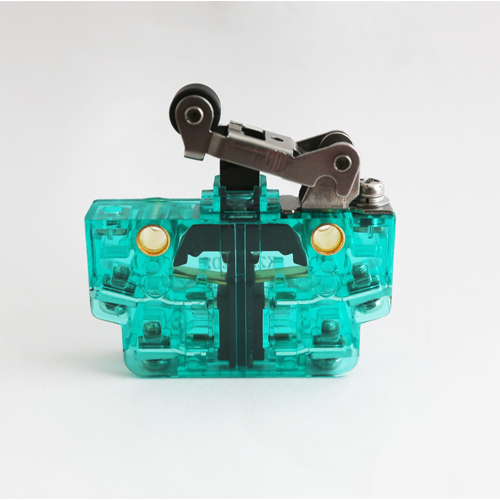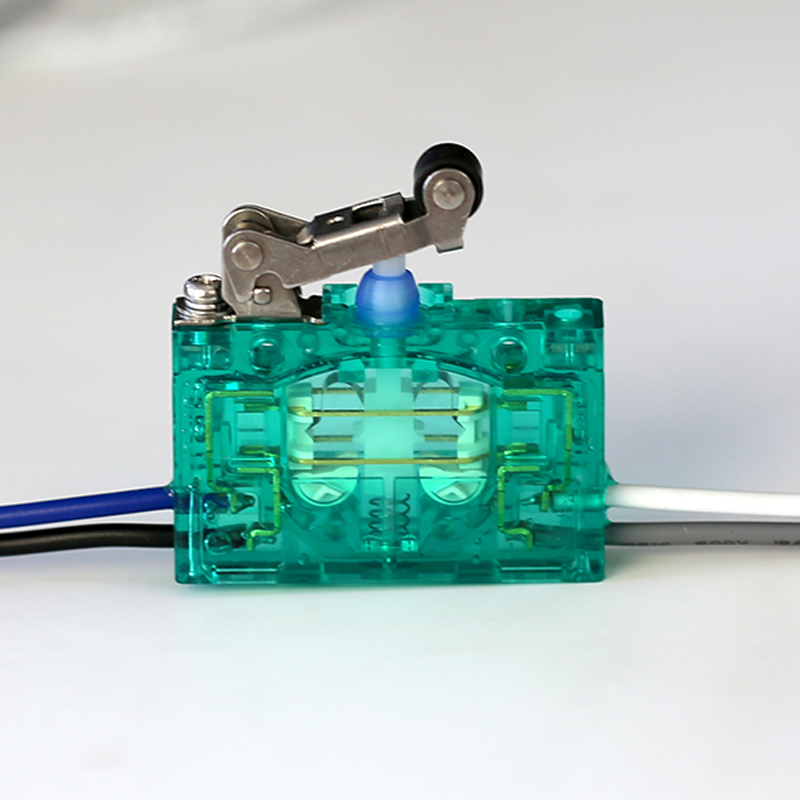

Selecting microswitches for rail transit use
Release time:2024-08-20
In a rail transit system, the stability and reliability of every component is crucial. As one of the key control components, the performance of microswitches directly affects the operational safety and efficiency of the entire system. Therefore, choosing the right microswitch to meet the specific usage conditions of rail transit is one of the key factors to ensure the stable operation of the system. So, which kind of microswitch meets the use conditions of rail transportation?
First of all, rail transportation has very strict requirements for microswitches, including but not limited to characteristics such as shock resistance, vibration resistance, and adaptation to a wide temperature range. This is because rail transportation vehicles experience frequent starts and stops and a variety of complex environmental conditions during operation, which requires that microswitches must have a high degree of stability and durability.

Secondly, from the consideration of operating frequency, microswitches in rail transportation need to be able to withstand high-frequency operation and have a fast response speed to ensure the real-time and accuracy of the control system. This means that the mechanical life of the microswitch must be long, and the contact material needs to have good conductivity and wear resistance.
Furthermore, considering the safety requirements of rail transportation, microswitches must also be characterized by high reliability and low failure rates. Any small failure may cause safety accidents, therefore, high quality manufacturing process and strict quality control are not to be ignored when selecting microswitches.
Finally, since rail transportation equipment is often exposed to changing weather conditions, the material of microswitches needs to have good waterproof, moisture-proof and corrosion-resistant properties to ensure that they can work properly even in harsh environments.

To summarize, microswitches suitable for rail transit should have the following characteristics: high stability and durability, high frequency operation capability, fast response time, high reliability and low failure rate, good waterproof, moistureproof and corrosion-resistant performance. When selecting microswitches, the performance indexes of the products should be carefully examined to ensure that the selected products can meet the high standard requirements of the rail transportation system.
Through the above analysis, we can conclude that only those microswitches specifically designed to meet the harsh conditions of rail transit can ensure the safe, stable and efficient operation of rail transit systems. Therefore, the selection of microswitches that meet the conditions of rail transit use is essential to guarantee the performance and safety of the entire rail transit system.
First of all, rail transportation has very strict requirements for microswitches, including but not limited to characteristics such as shock resistance, vibration resistance, and adaptation to a wide temperature range. This is because rail transportation vehicles experience frequent starts and stops and a variety of complex environmental conditions during operation, which requires that microswitches must have a high degree of stability and durability.

Secondly, from the consideration of operating frequency, microswitches in rail transportation need to be able to withstand high-frequency operation and have a fast response speed to ensure the real-time and accuracy of the control system. This means that the mechanical life of the microswitch must be long, and the contact material needs to have good conductivity and wear resistance.
Furthermore, considering the safety requirements of rail transportation, microswitches must also be characterized by high reliability and low failure rates. Any small failure may cause safety accidents, therefore, high quality manufacturing process and strict quality control are not to be ignored when selecting microswitches.
Finally, since rail transportation equipment is often exposed to changing weather conditions, the material of microswitches needs to have good waterproof, moisture-proof and corrosion-resistant properties to ensure that they can work properly even in harsh environments.

To summarize, microswitches suitable for rail transit should have the following characteristics: high stability and durability, high frequency operation capability, fast response time, high reliability and low failure rate, good waterproof, moistureproof and corrosion-resistant performance. When selecting microswitches, the performance indexes of the products should be carefully examined to ensure that the selected products can meet the high standard requirements of the rail transportation system.
Through the above analysis, we can conclude that only those microswitches specifically designed to meet the harsh conditions of rail transit can ensure the safe, stable and efficient operation of rail transit systems. Therefore, the selection of microswitches that meet the conditions of rail transit use is essential to guarantee the performance and safety of the entire rail transit system.
